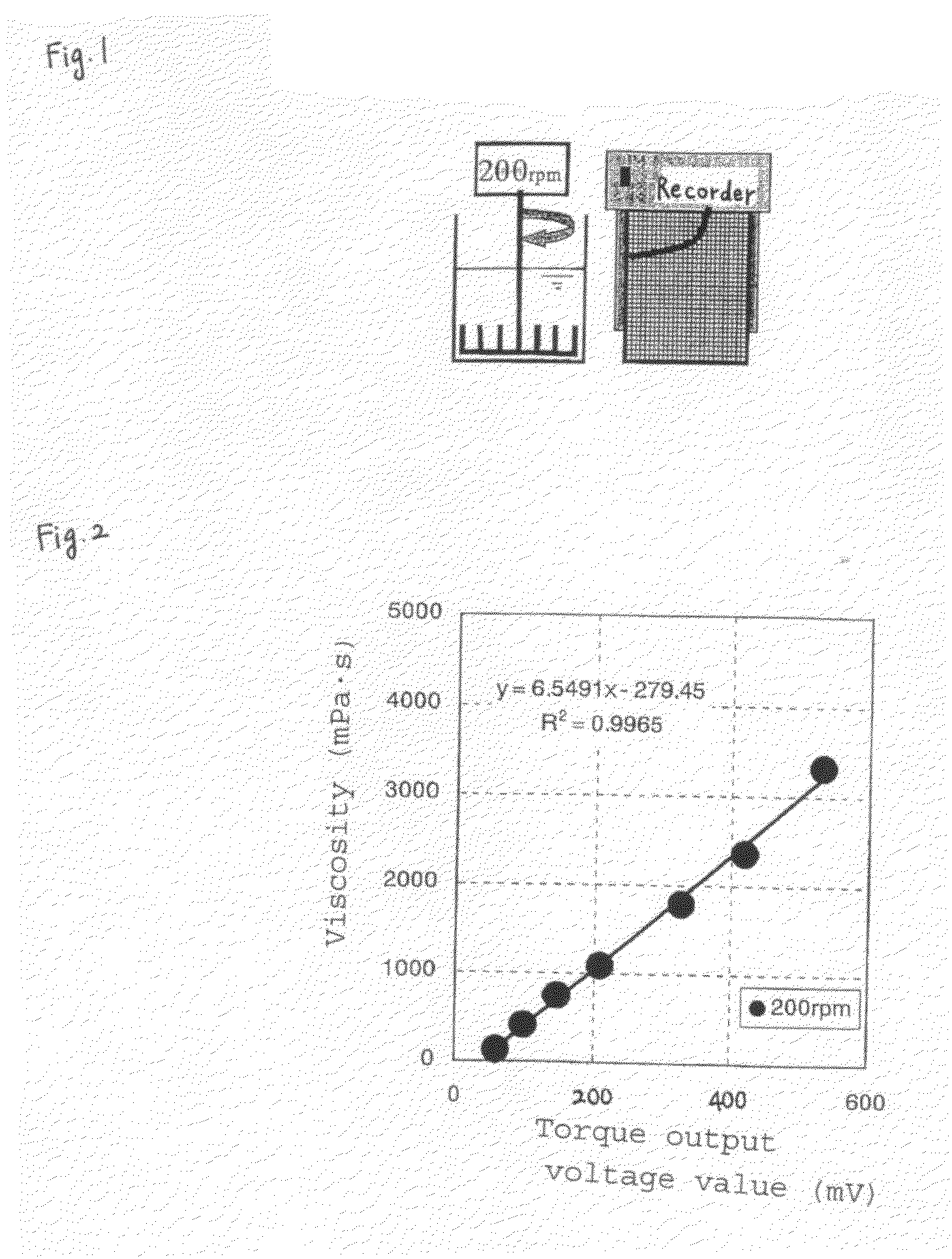Method for Producing Phosphoric Acid Ester-Based Polymer
a technology polymer, which is applied in the field of phosphoric acid ester-based polymer production, can solve the problems of complex purification, deterioration of workability and constructibility, and increased fluctuation of molecular weigh
- Summary
- Abstract
- Description
- Claims
- Application Information
AI Technical Summary
Benefits of technology
Problems solved by technology
Method used
Image
Examples
synthesis example 1-a2
[0257]A phosphoric acid ester-based polymer was obtained in the same manner as in Synthesis Example 1-A1, except that the dissolved oxygen concentration of the water was adjusted to 2.1 mg / kg (pH at the time of monomer polymerization was 1.2).
synthesis example 1-a3
[0258]A phosphoric acid ester-based polymer was obtained in the same manner as in Synthesis Example 1-A1, except that the dissolved oxygen concentration of the water was adjusted to 3.8 mg / kg (pH at the time of monomer polymerization was 1.2).
Synthesis Example 1-A4
[0259]A phosphoric acid ester-based polymer was obtained in the same manner as in Synthesis Example 1-A1, except that the dissolved oxygen concentration of the water was adjusted to 4.5 mg / kg (pH at the time of monomer polymerization was 1.2).
(1-2) Synthesis Examples 1-B1 to 1-B2 Using Composition No. B
synthesis example 1-b1
[0260]366 g of water was introduced into a glass reaction vessel (four-necked flask) equipped with a stirrer, and pressure reduction and nitrogen purging were repeated while stirring, to adjust the dissolved oxygen concentration of the water to 0.2 mg / kg with respect to 25° C. Subsequently, while introducing 3 ml / min of nitrogen per 1000 parts by weight of the total feed, the temperature was elevated to 80° C. in a nitrogen atmosphere. A mixture of 450 g (effective fraction 60.8%, water fraction 35%) of ω-methoxypolyethylene glycol monomethacrylate (number of added moles of ethylene oxide: 23), 71.6 g of a phosphoric acid esterification product (A), which was a mixture of phosphoric acid mono(2-hydroxyethyl)methacrylic acid ester and di[(2-hydroxyethyl)methacrylic acid]ester, and 4.5 g of 3-mercaptopropionic acid, and a solution prepared by dissolving 8.4 g of ammonium persulfate in 48 g of water were both added dropwise, over 1.5 hours for each. After aging for 1 hour, a solution p...
PUM
| Property | Measurement | Unit |
|---|---|---|
| temperature | aaaaa | aaaaa |
| temperature | aaaaa | aaaaa |
| pH | aaaaa | aaaaa |
Abstract
Description
Claims
Application Information
 Login to View More
Login to View More - R&D
- Intellectual Property
- Life Sciences
- Materials
- Tech Scout
- Unparalleled Data Quality
- Higher Quality Content
- 60% Fewer Hallucinations
Browse by: Latest US Patents, China's latest patents, Technical Efficacy Thesaurus, Application Domain, Technology Topic, Popular Technical Reports.
© 2025 PatSnap. All rights reserved.Legal|Privacy policy|Modern Slavery Act Transparency Statement|Sitemap|About US| Contact US: help@patsnap.com



